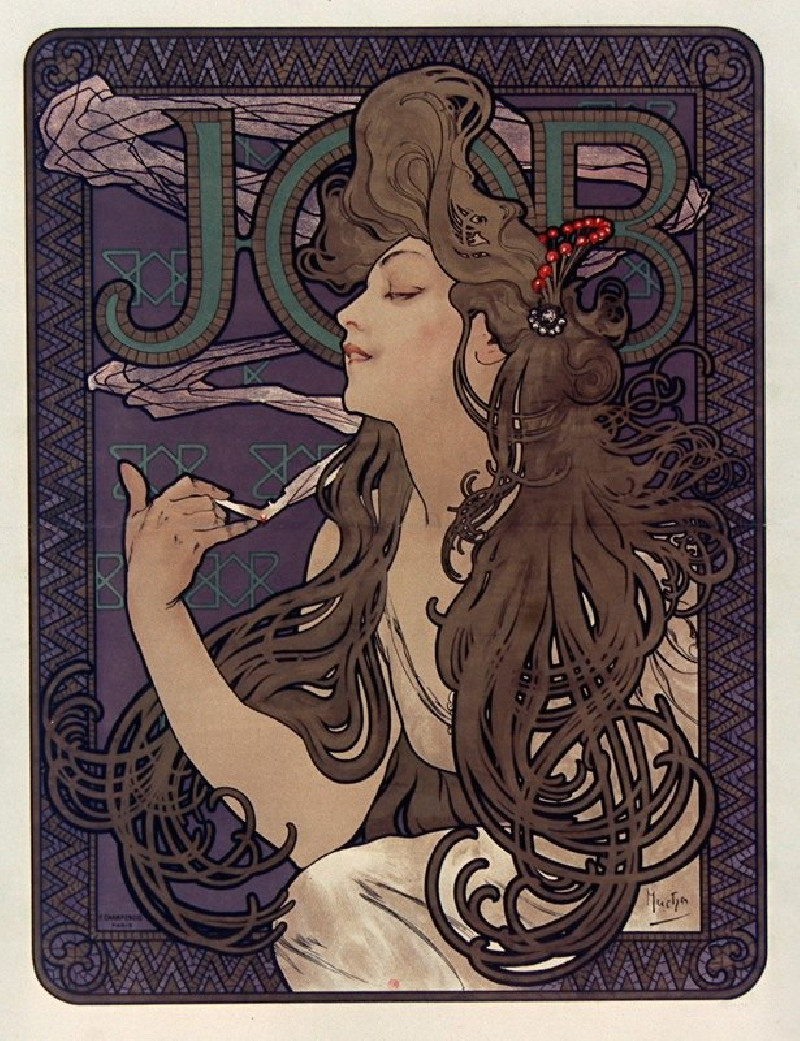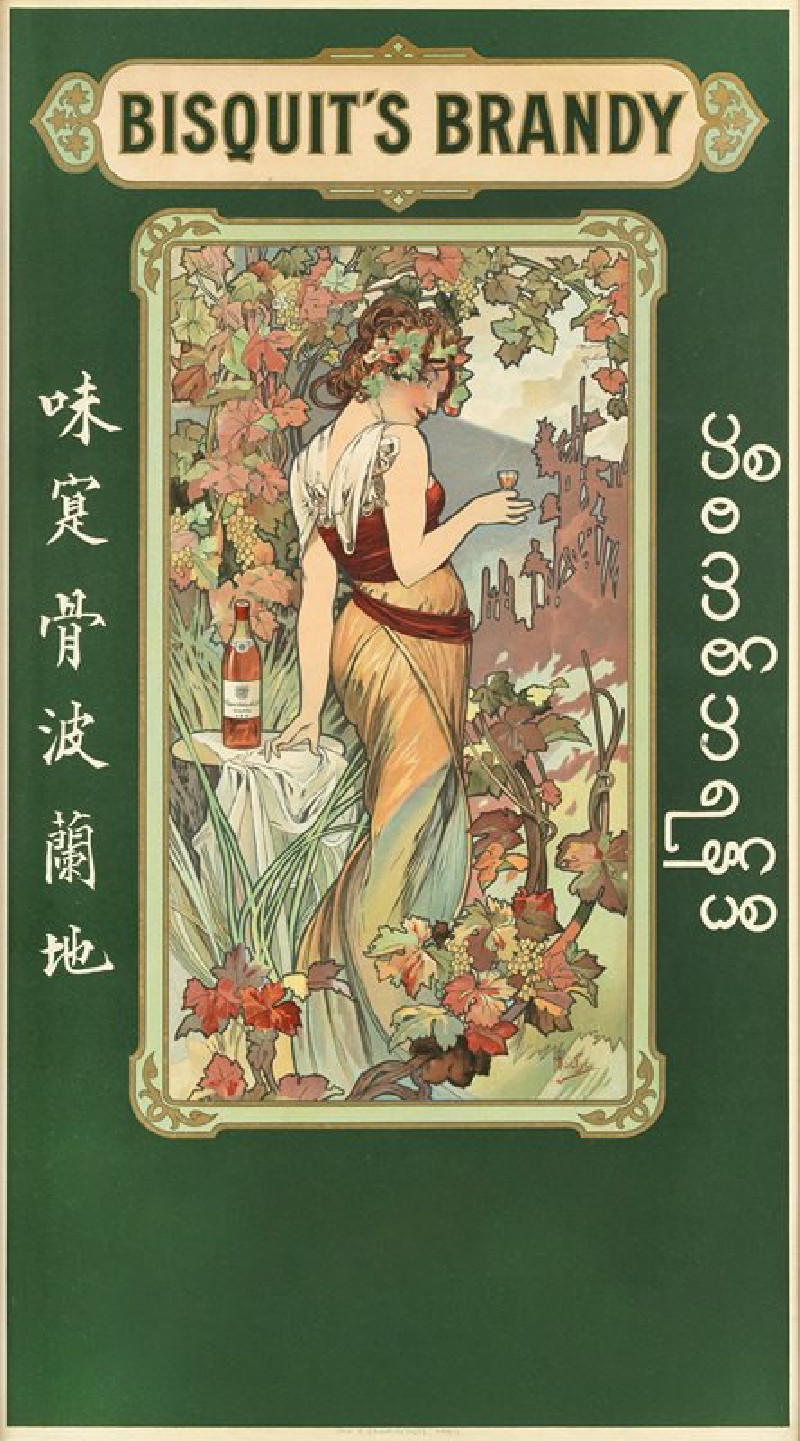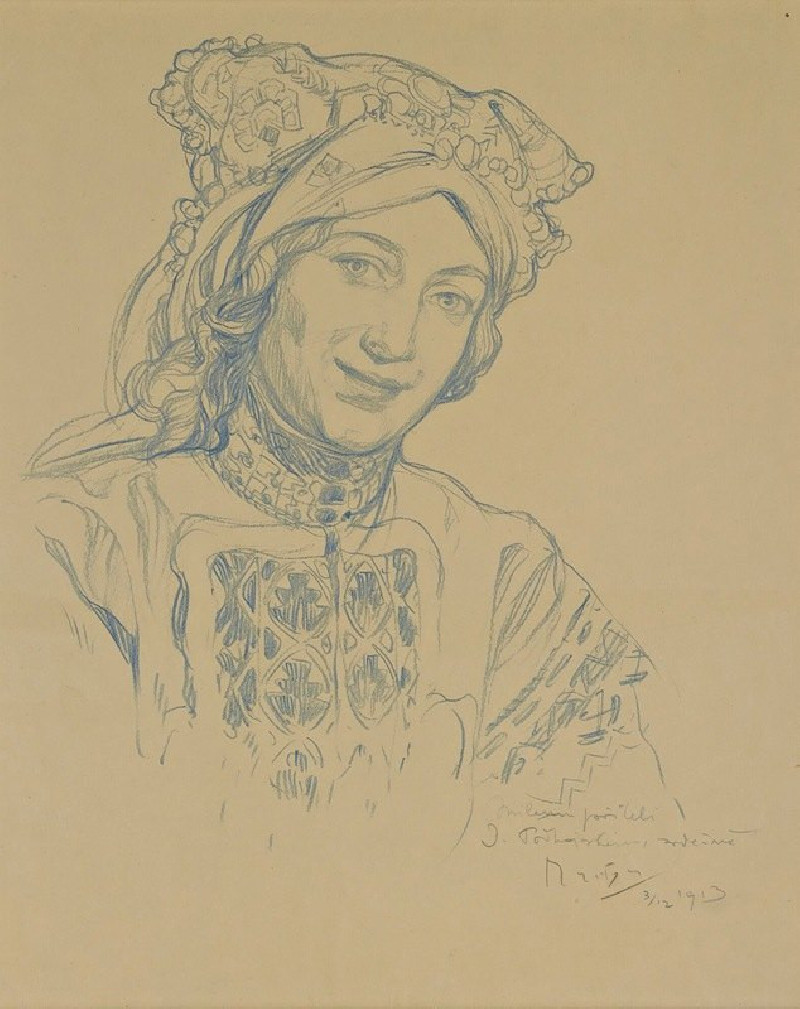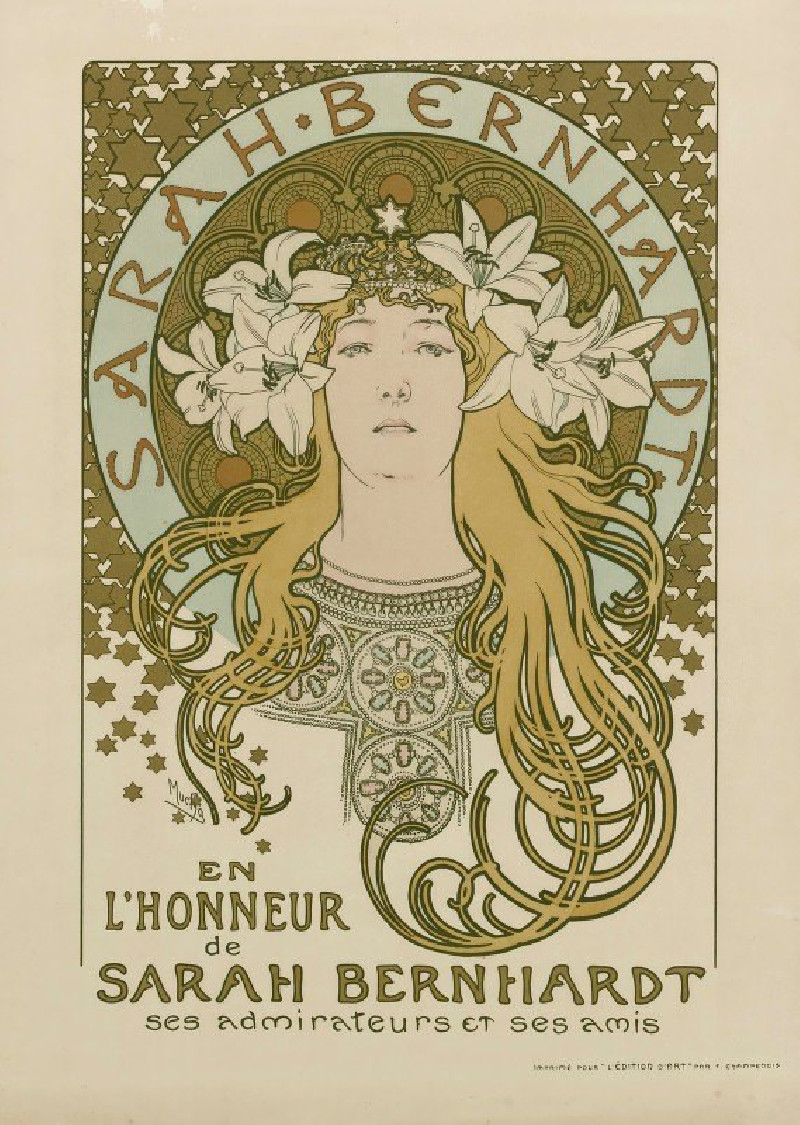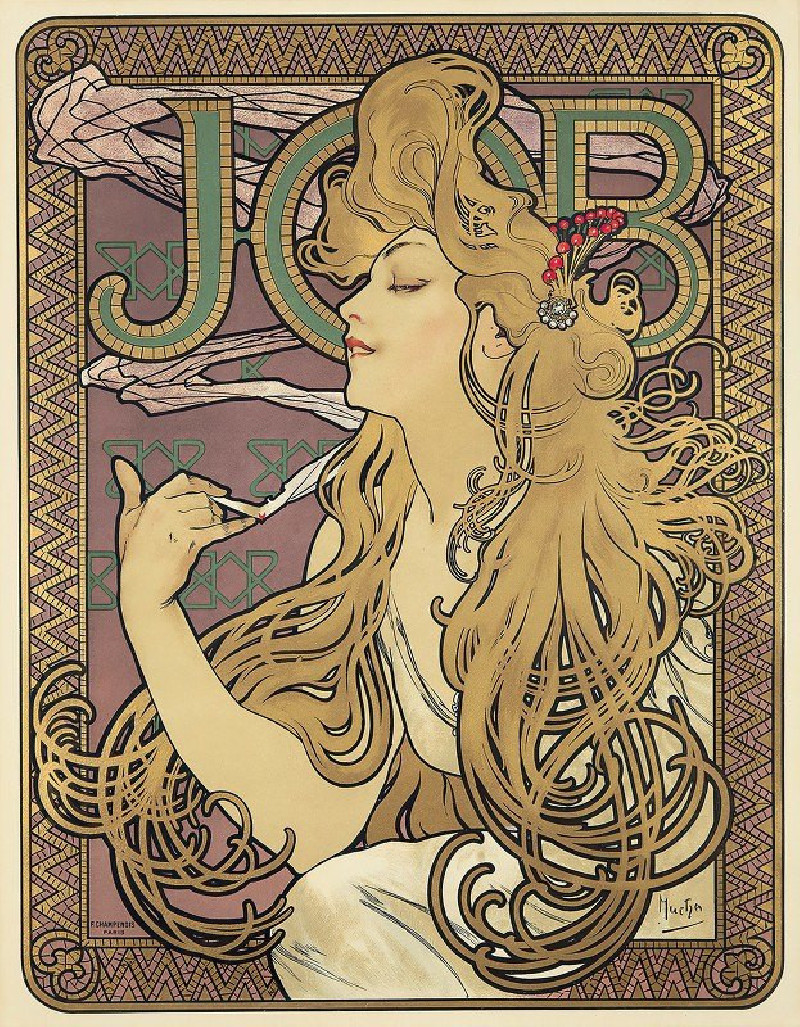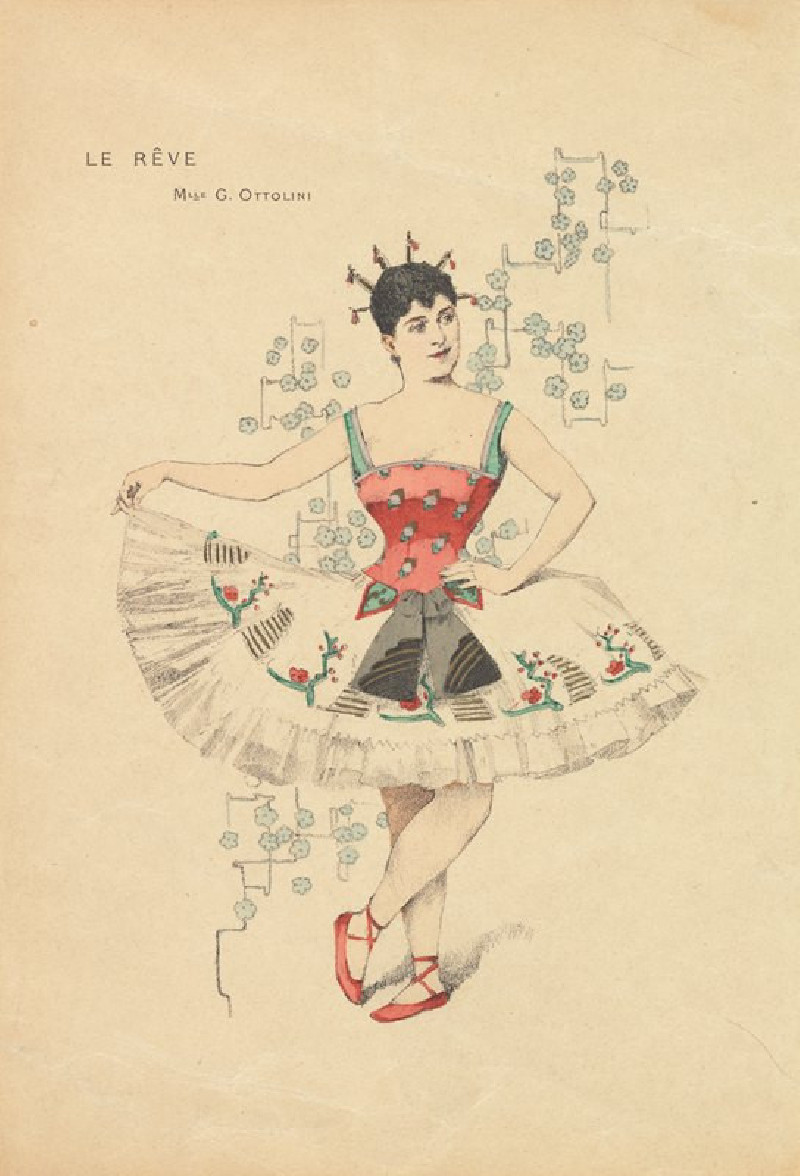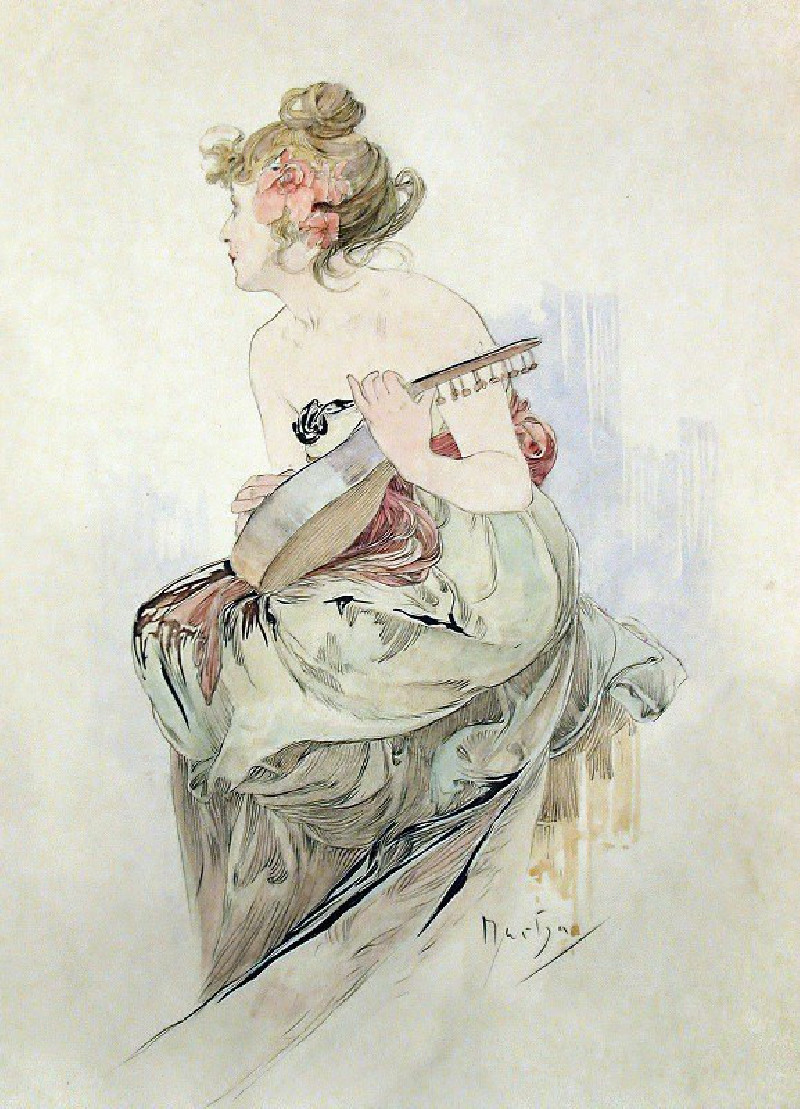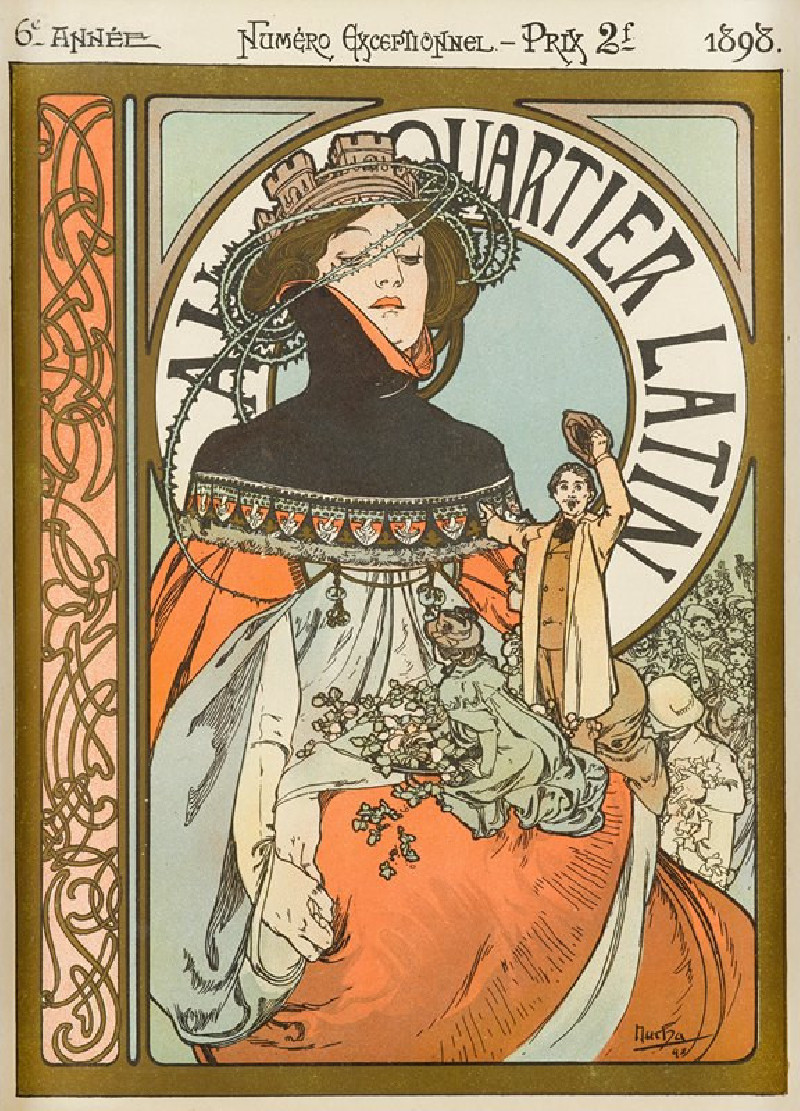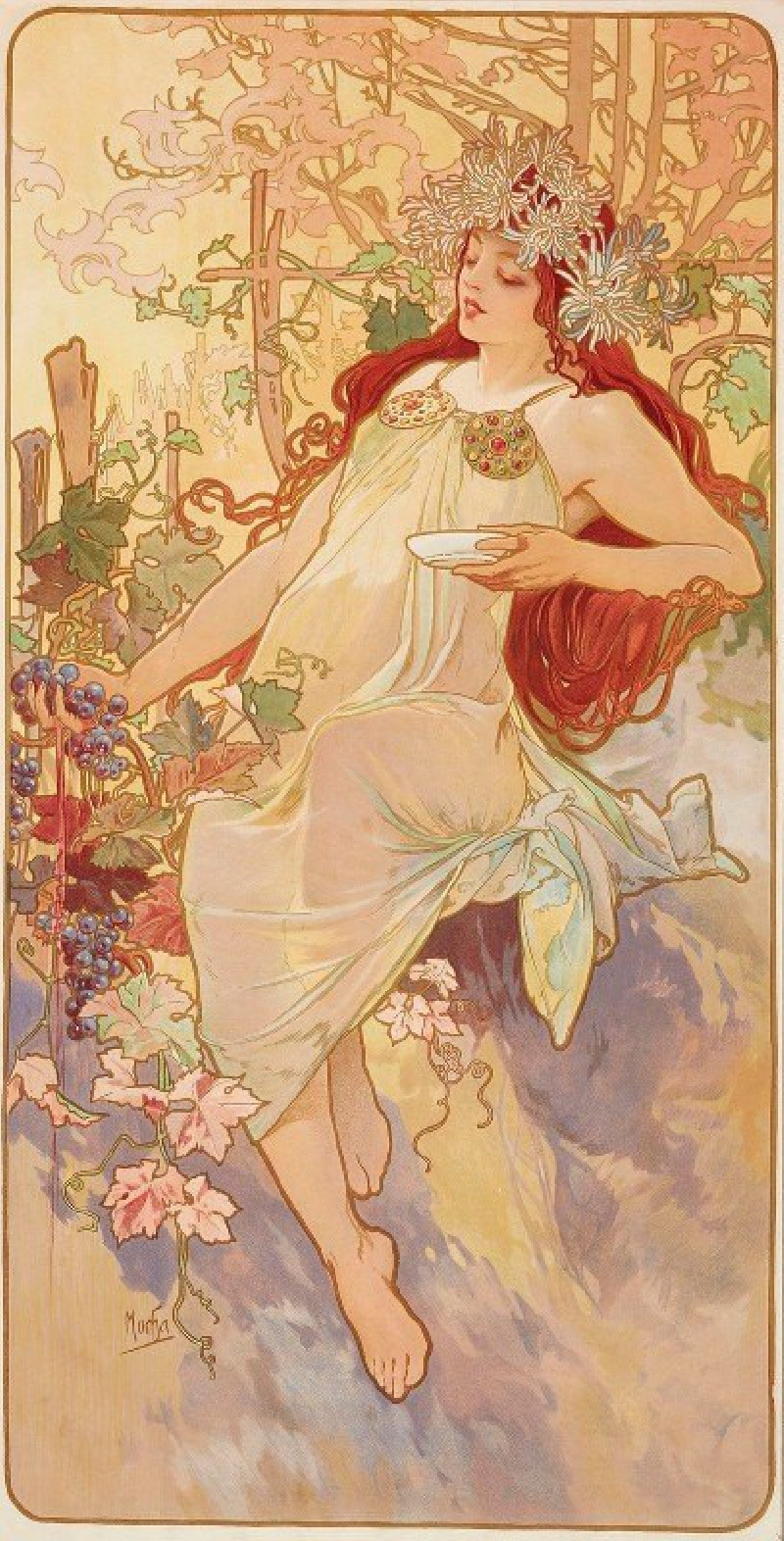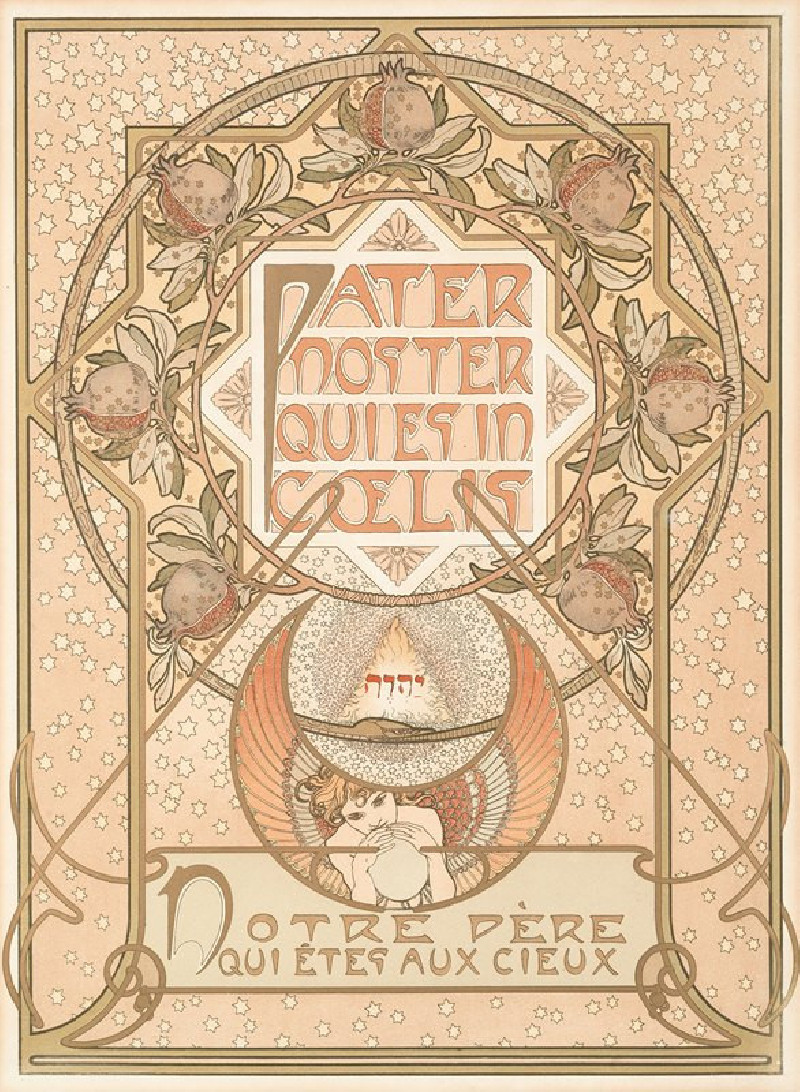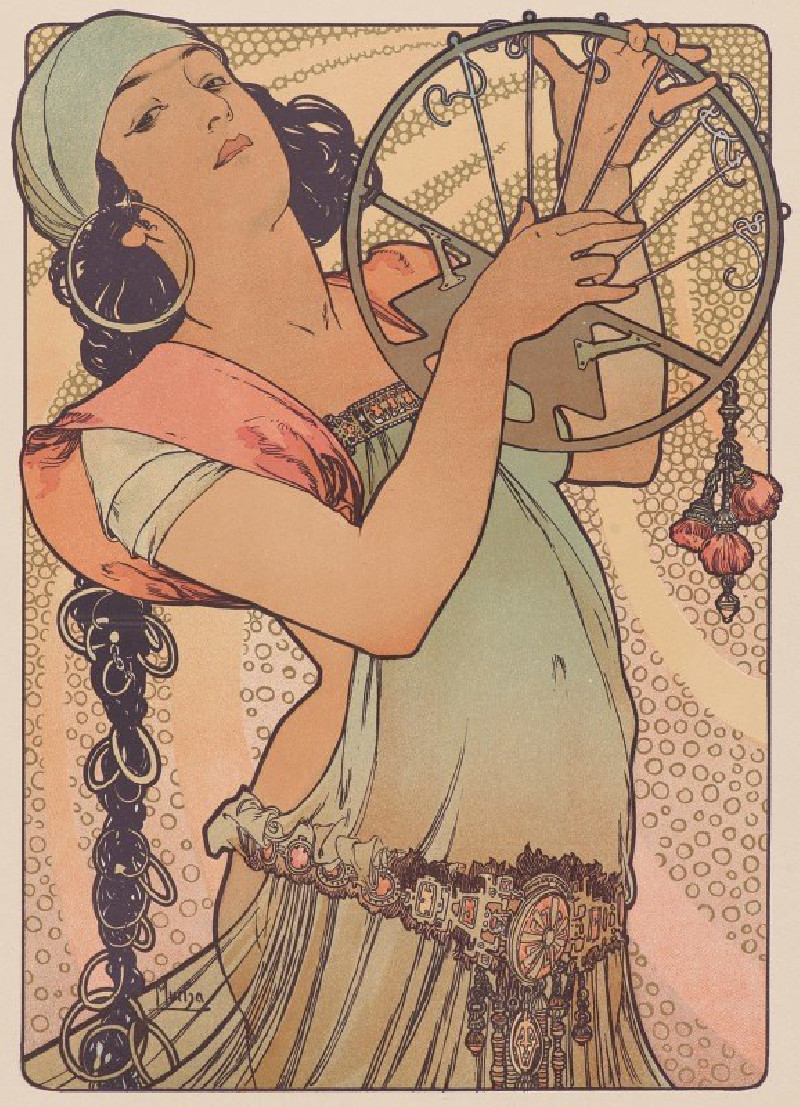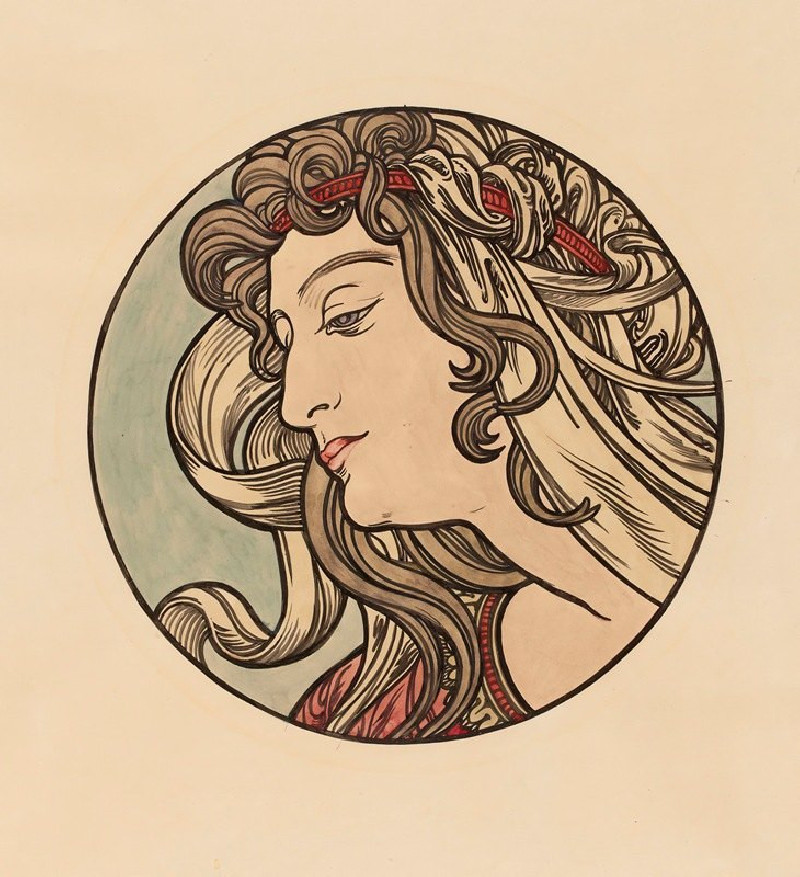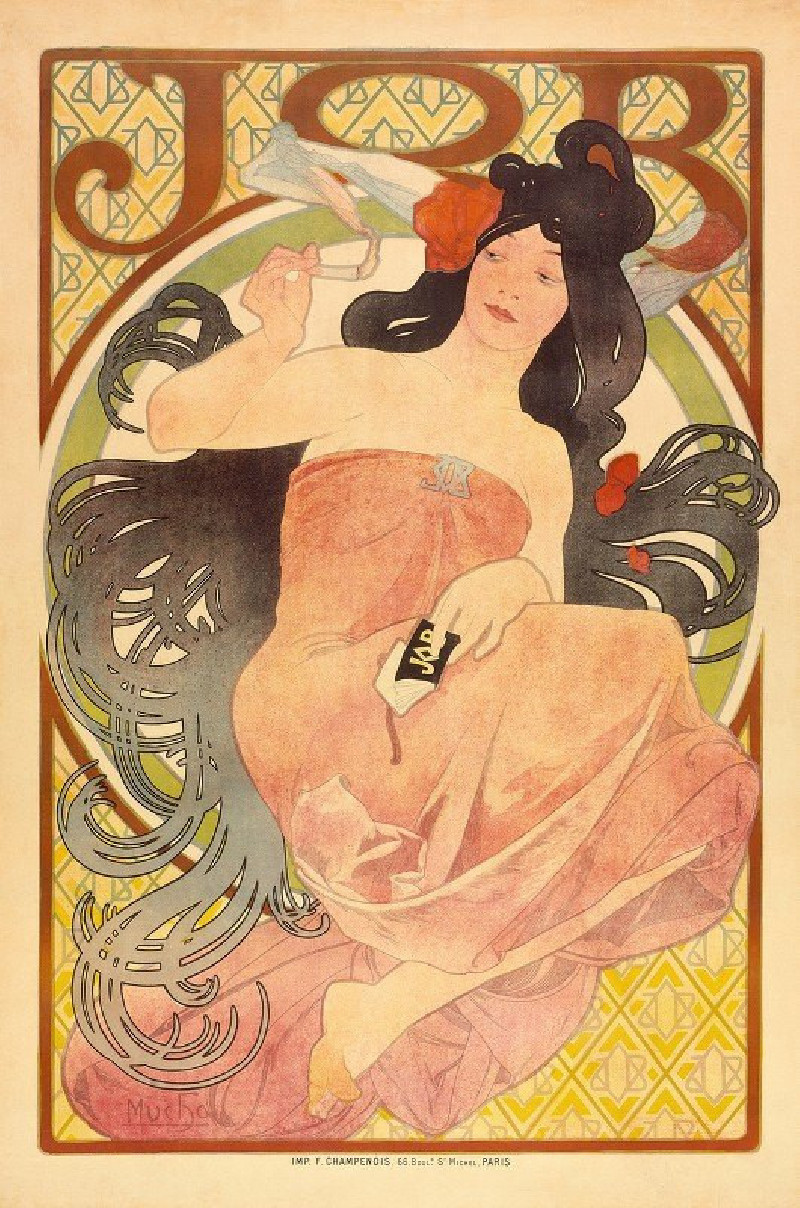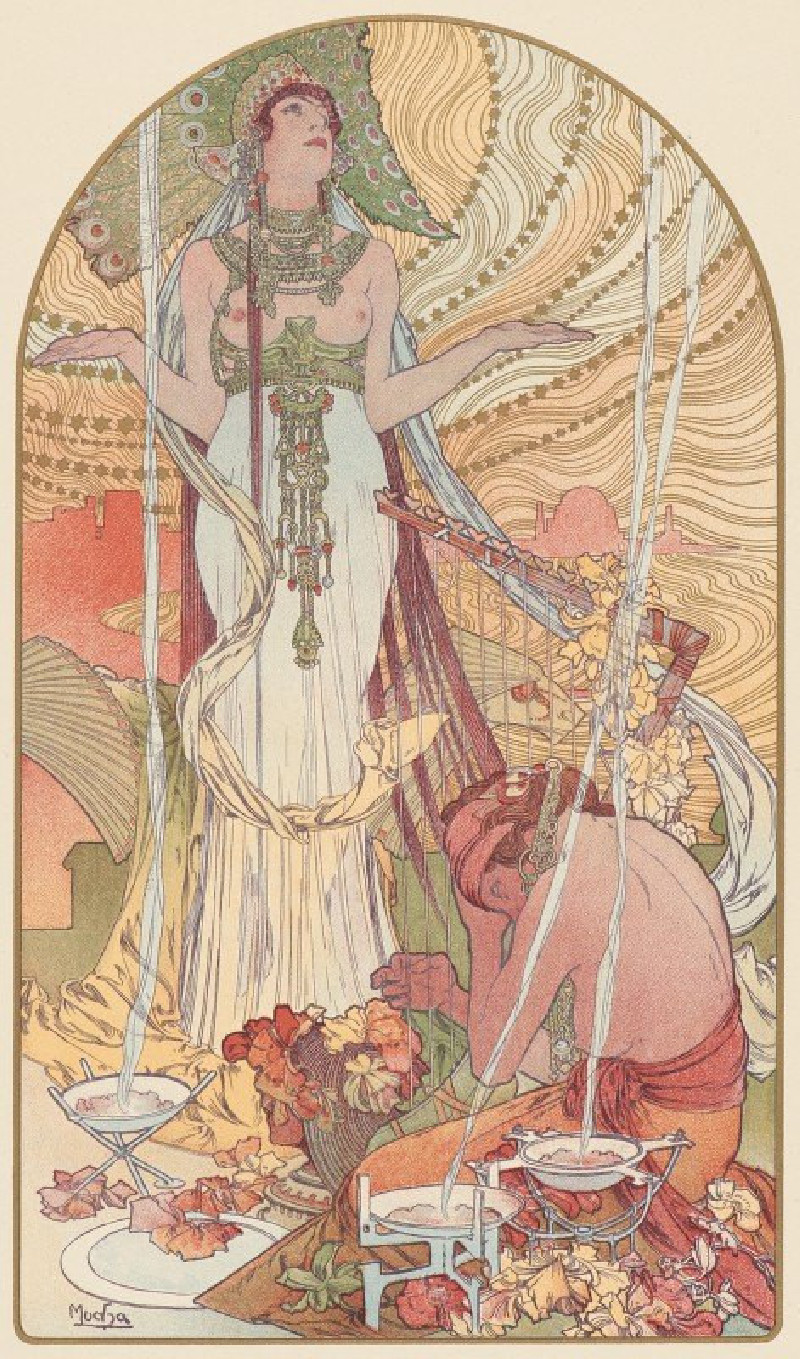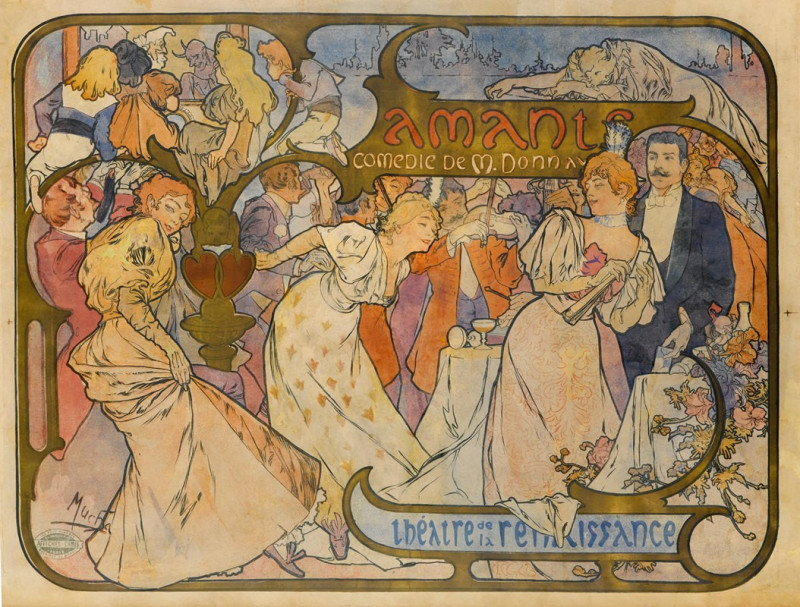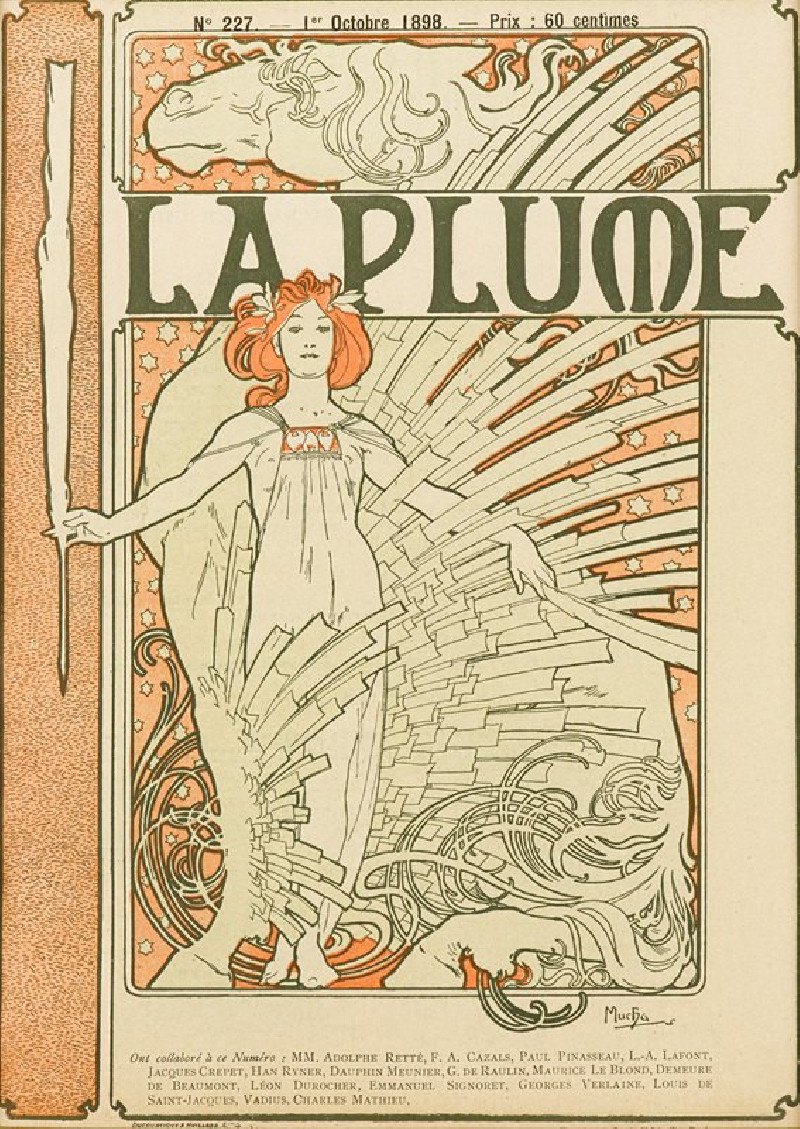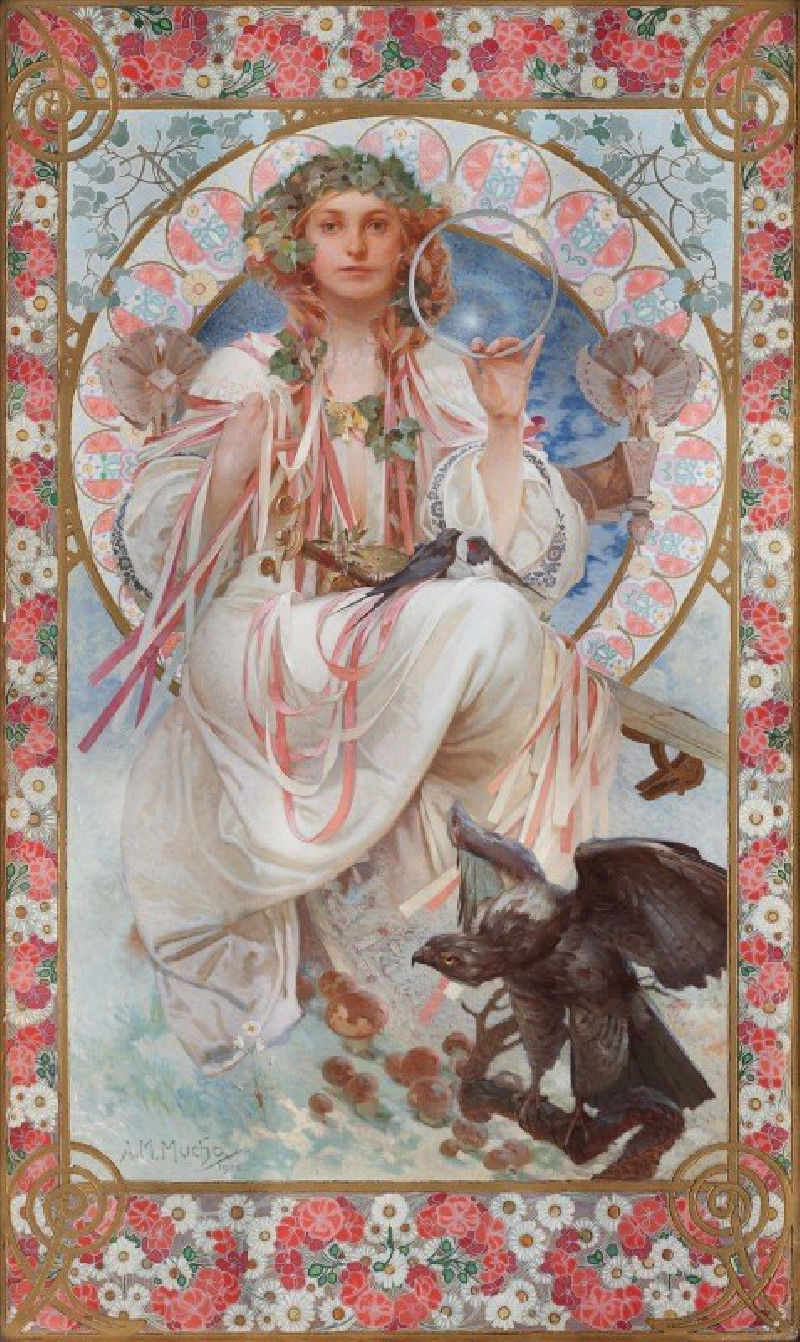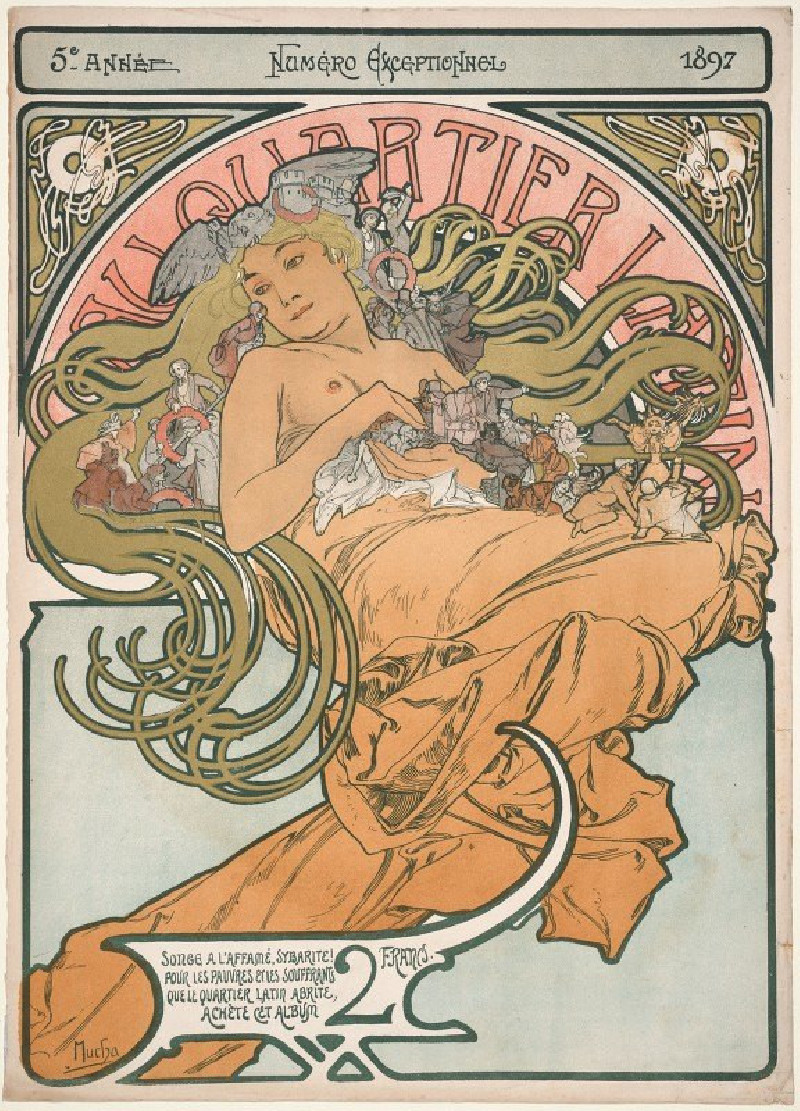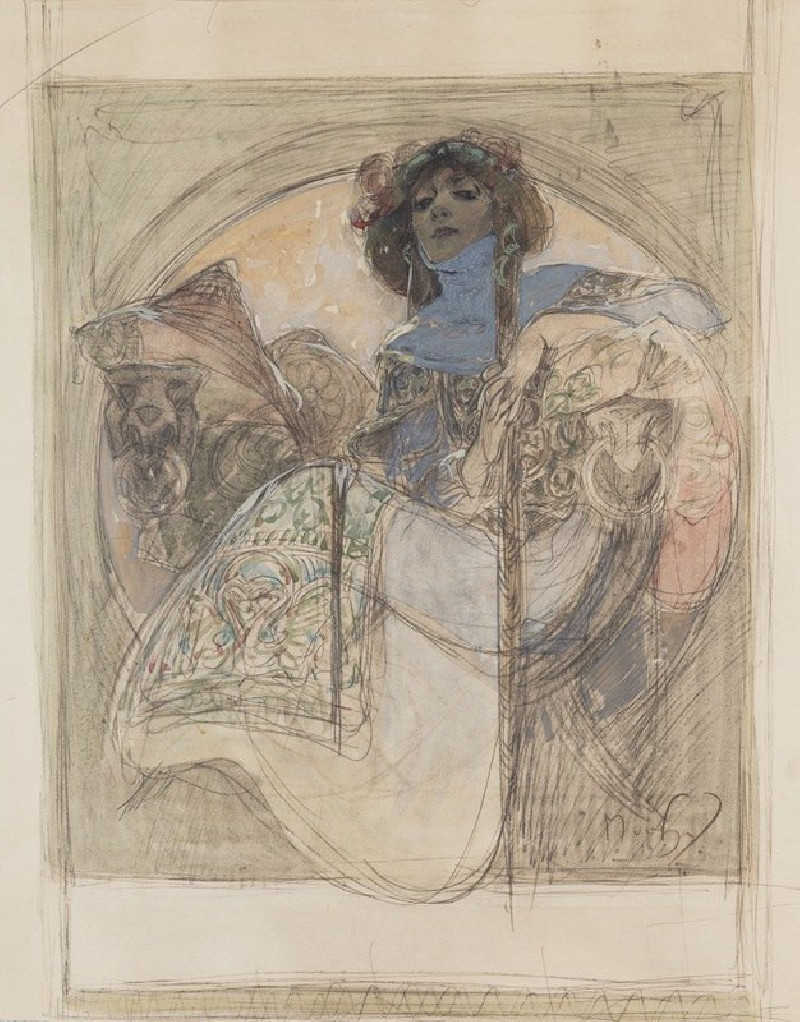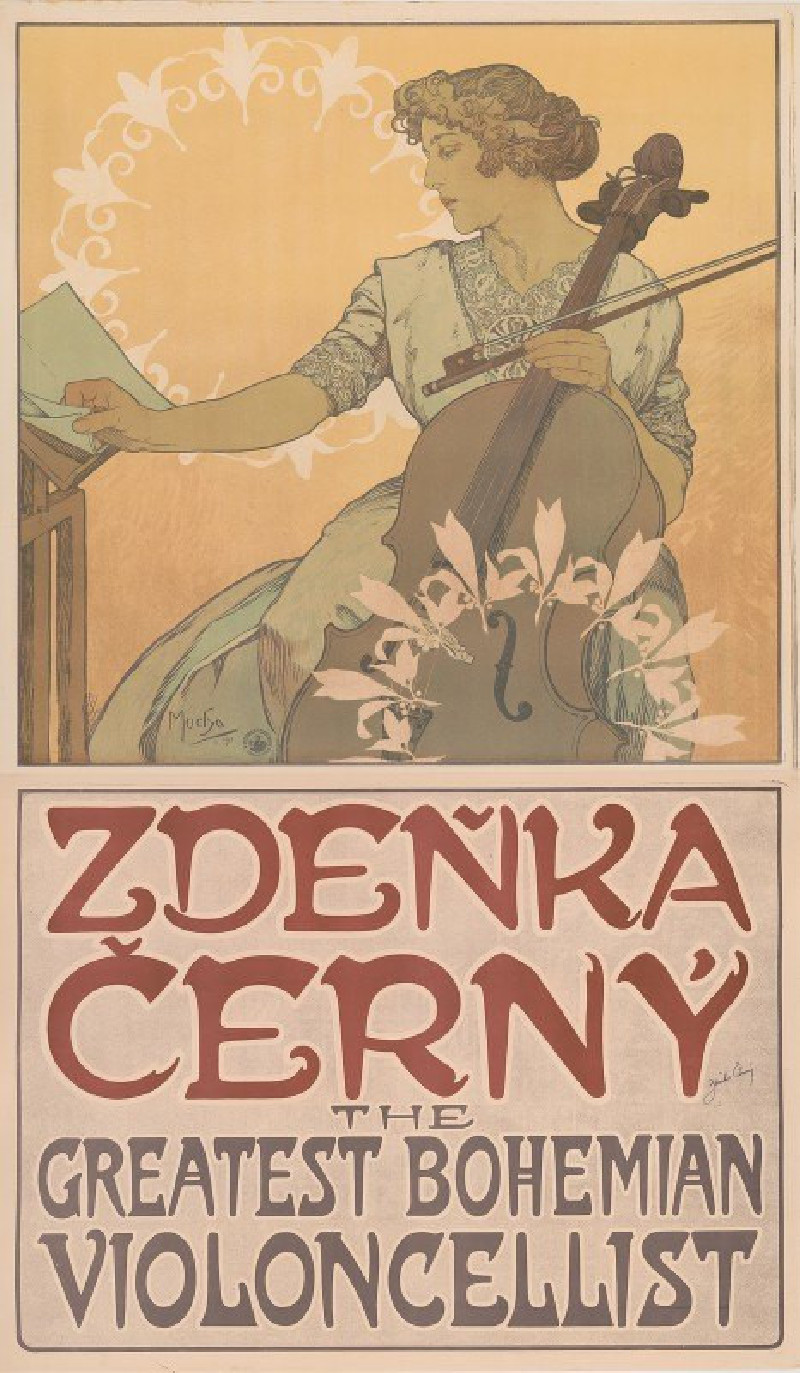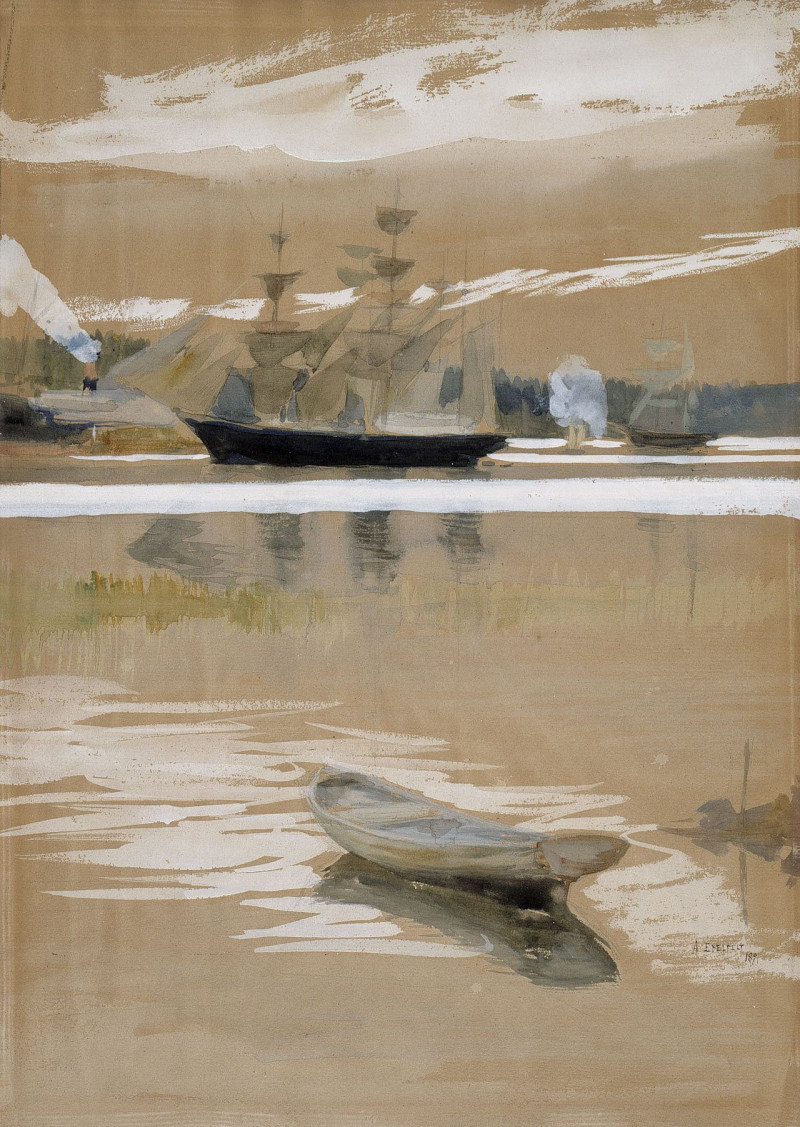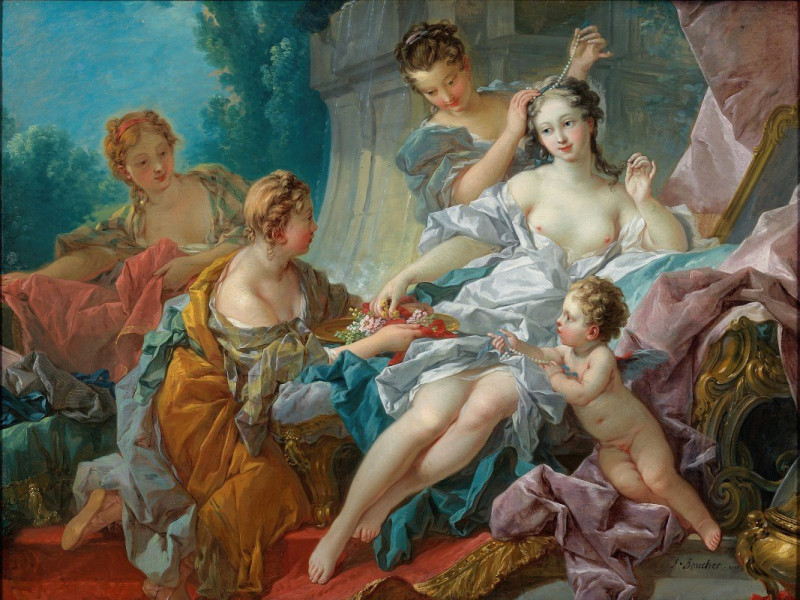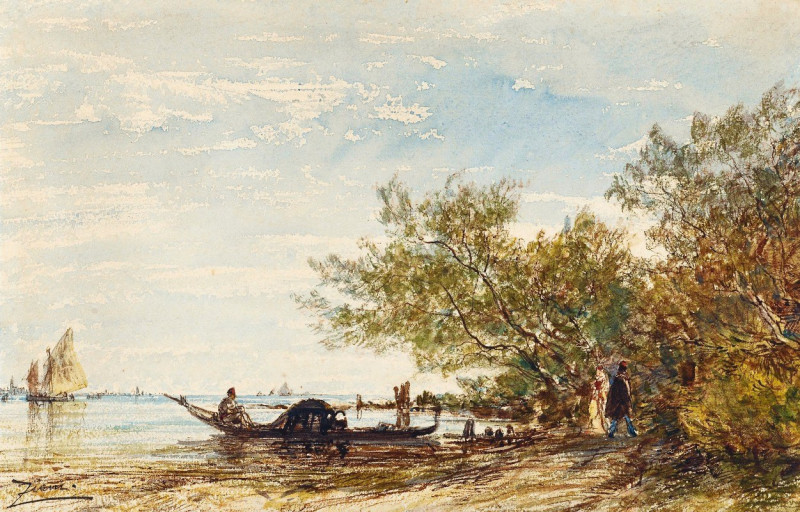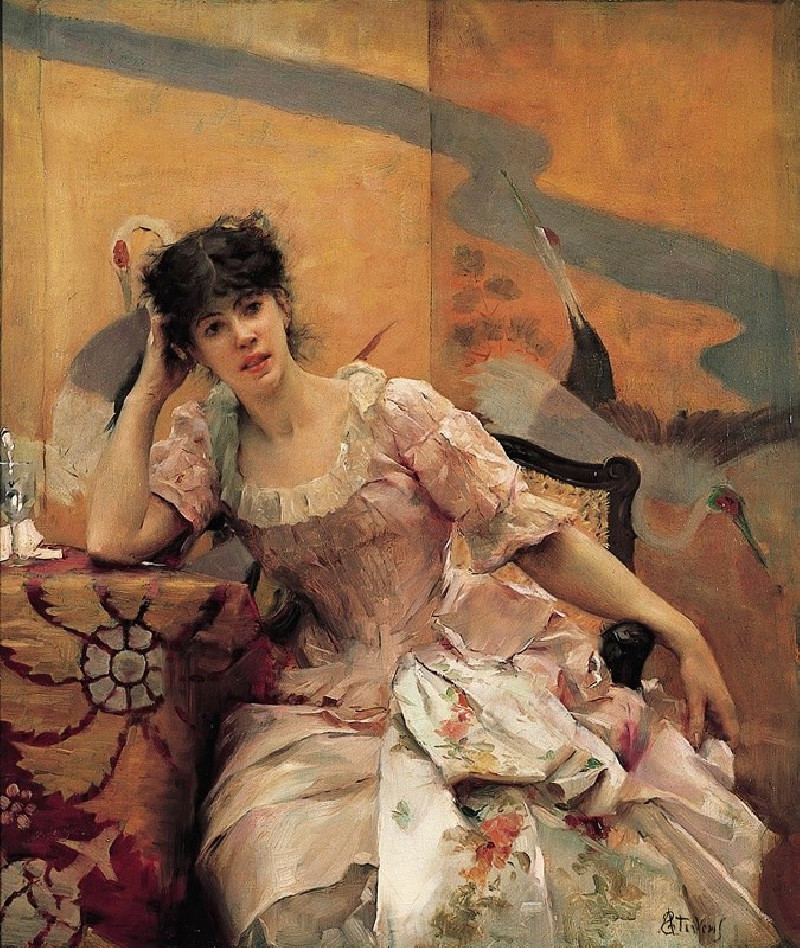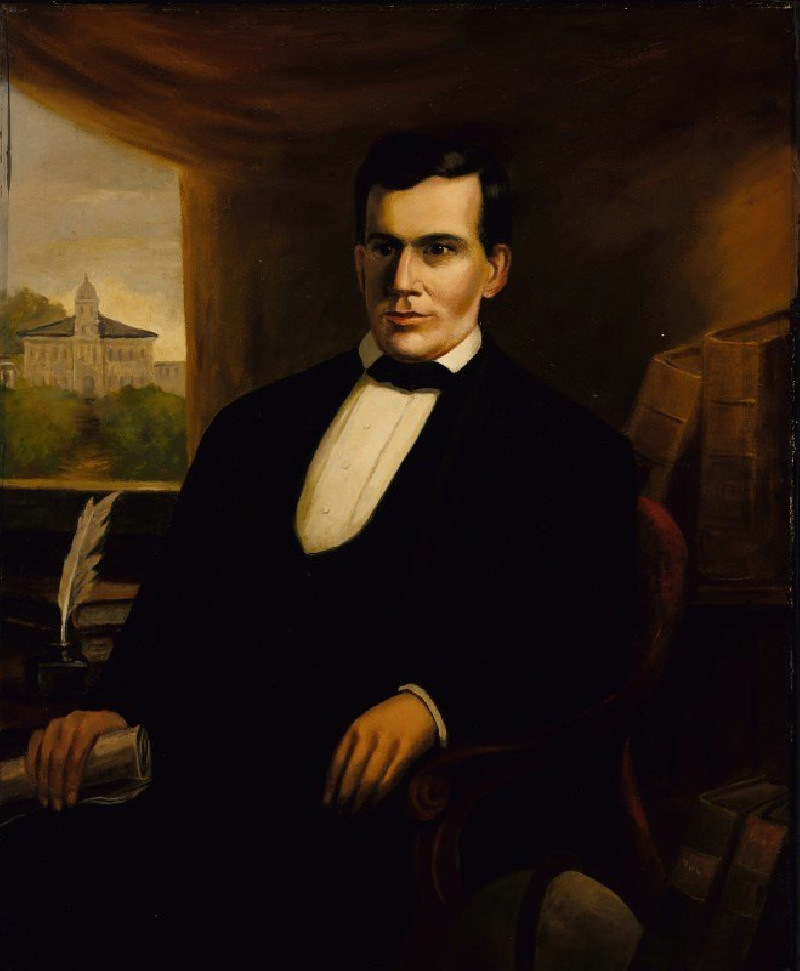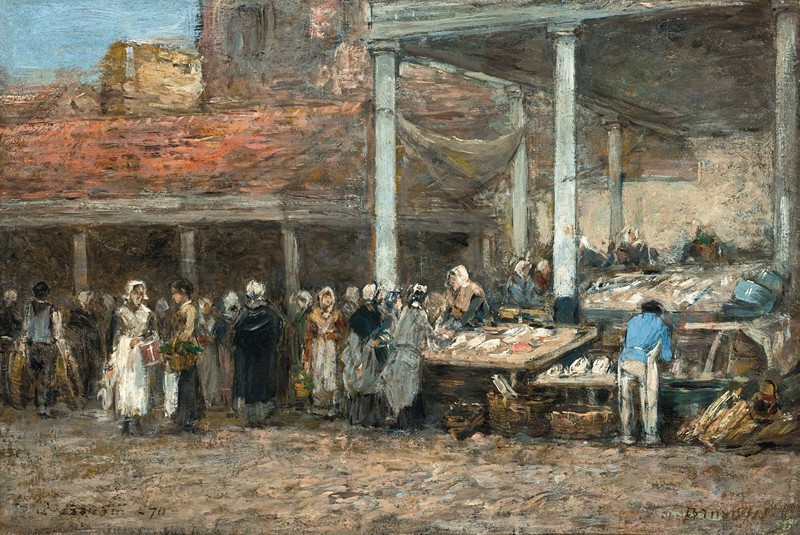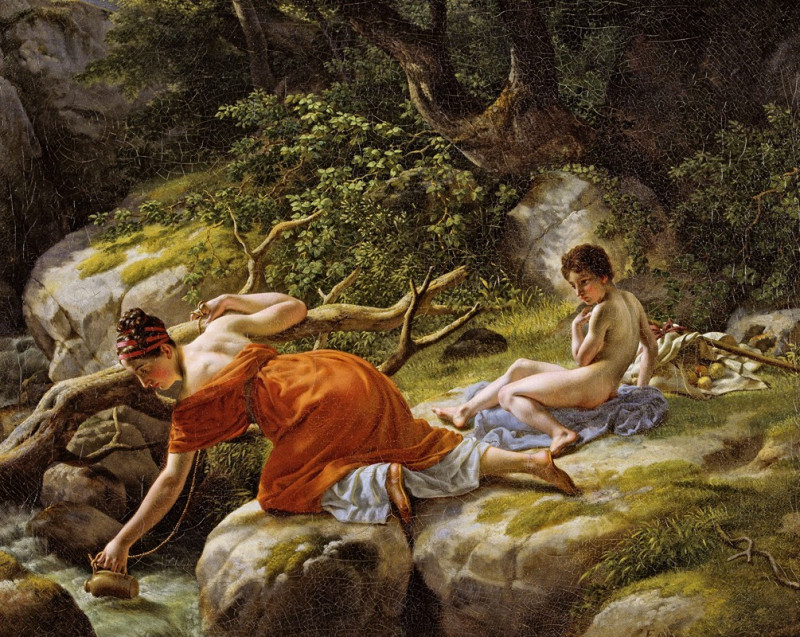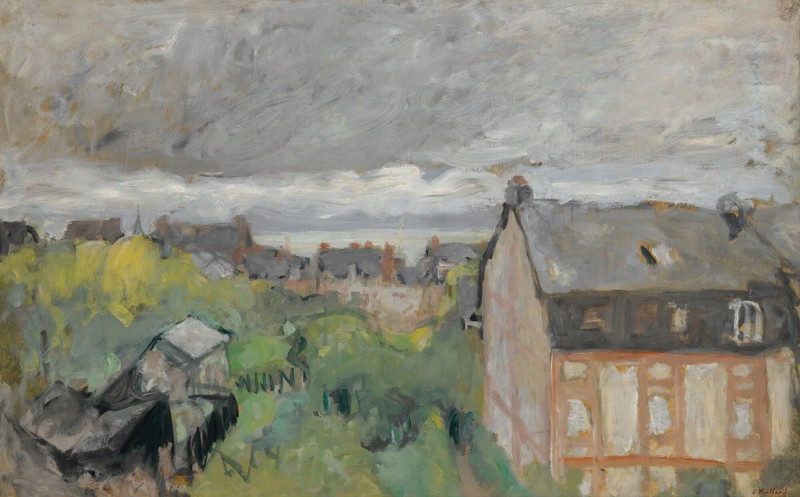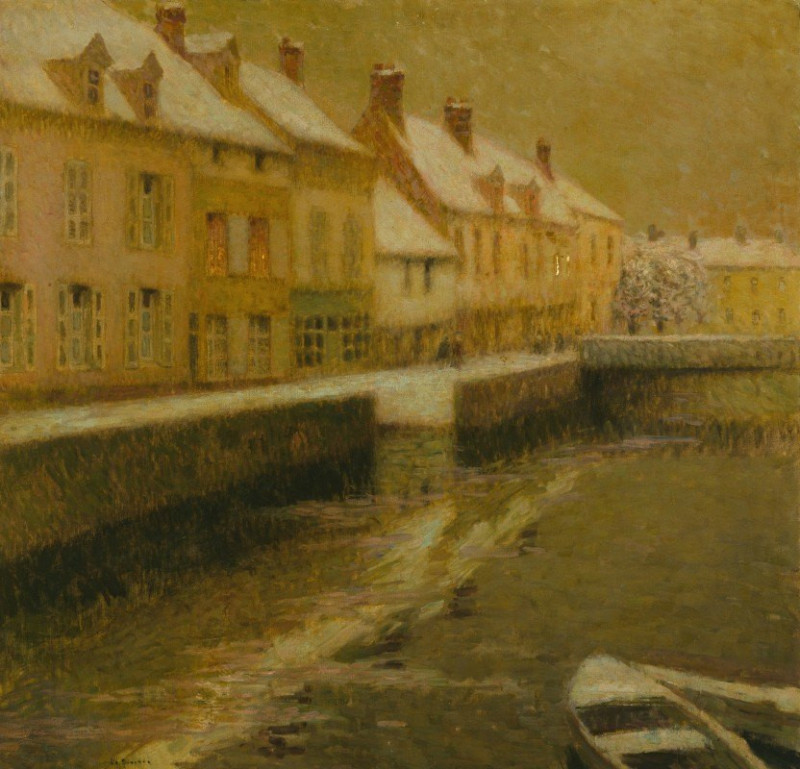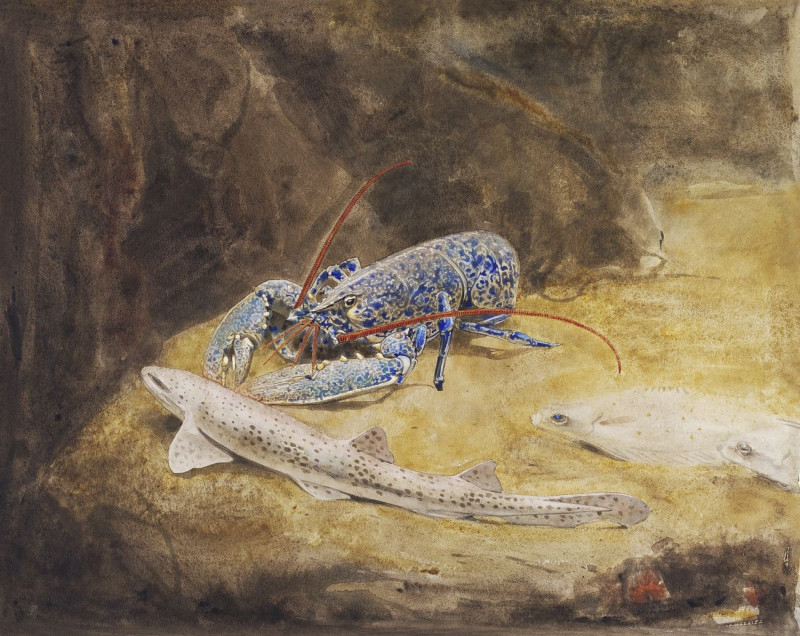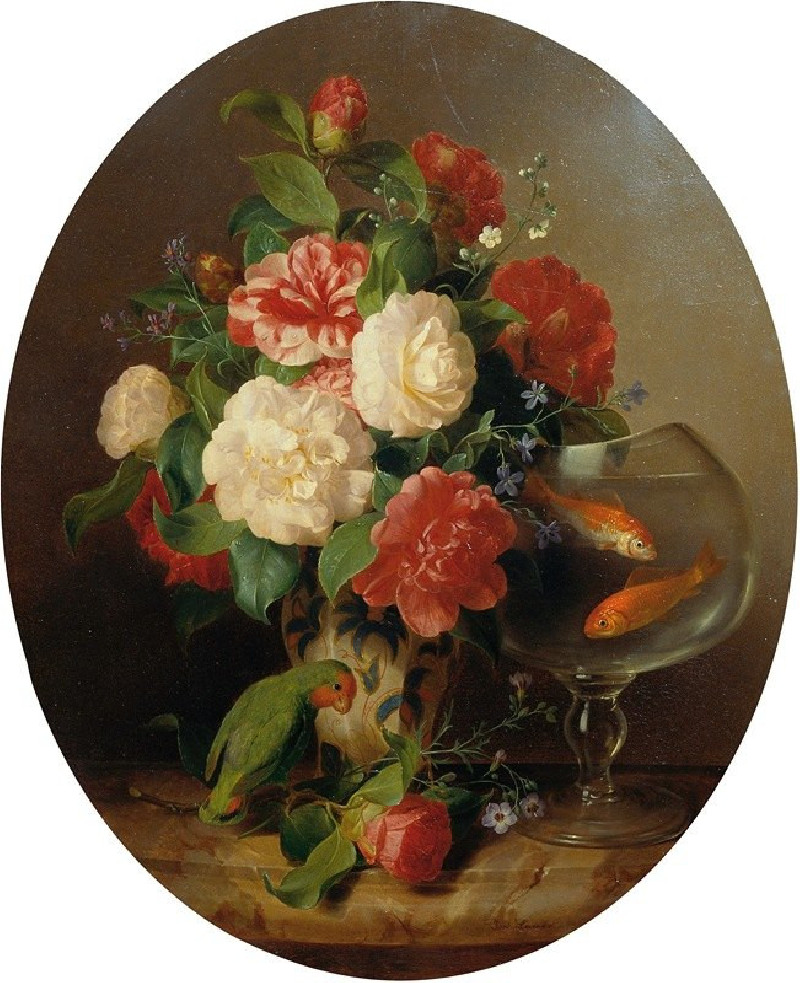Publicité pour les cigarettes Job. (1896)
Technique: Giclée quality print
Recommended by our customers
More about this artwork
"Publicité pour les cigarettes Job" is a celebrated lithographic poster by the Czech artist Alphonse Mucha, produced in 1896. This piece is a prime example of Mucha's iconic Art Nouveau style, characterized by its intricate detail, beautiful forms, and elegant decorative elements.The artwork prominently features a woman, a typical subject in Mucha's work, who epitomizes the idealized beauty of Art Nouveau. Her flowing, voluminous hair cascades around her shoulders and is filled with intricate lines and whorls, which is particularly striking. Her pose is languid and relaxed as she delicately holds a cigarette, bringing it to her lips, which conveys both a sense of elegance and nonchalance.The background and borders of the poster are ornately decorated with geometric and floral patterns, adding layers of rich texture and detail that enhance the luxurious feel of the image. The word "JOB", prominently displayed at the top in large, stylized lettering, refers to the brand of the cigarette she is enjoying, tying the aesthetic elements of the design to its commercial purpose.The color palette used is quite subdued yet rich, with purples, blues, and earth tones that complement the overall serene and lush ambiance of the piece.Overall, Alphonse Mucha's work for the JOB cigarette advertisement not only captures the allure and sophistication associated with the product but also showcases his masterful ability to blend commercial and artistic elements seamlessly.
Delivery
Returns
Alphonse Maria Mucha also know internationally as Alphonse Mucha (1860-1939), was a Czech graphic artist, painter and illustrator. He lived in Paris during the Art Nouveau period, and is best know for his noticeably stylized and decorative theatrical posters like those of Sarah Bernhardt, the most famous actress in paris at the time. Mucha produced paintings, advertisements, book illustrations as well as designs for carpets, jewelry and theatre sets, in what was called the Mucha style. His works featured beautiful young women in neoclassical robes surrounded by flowers which formed as haloes.

